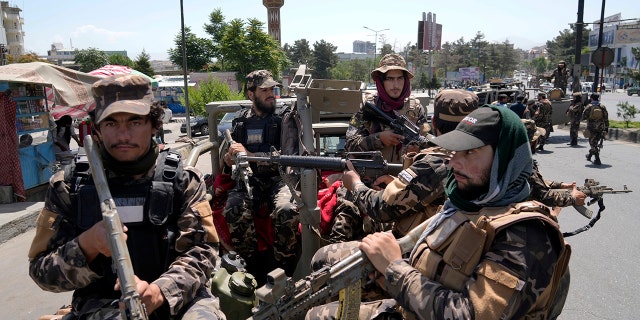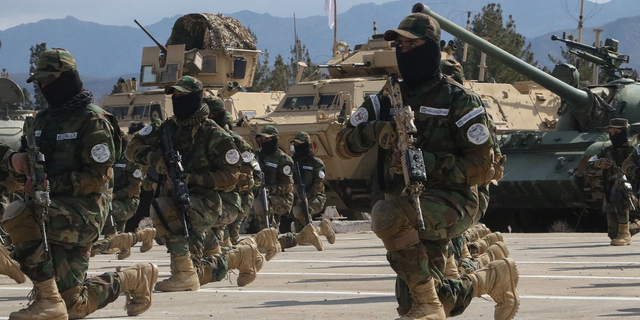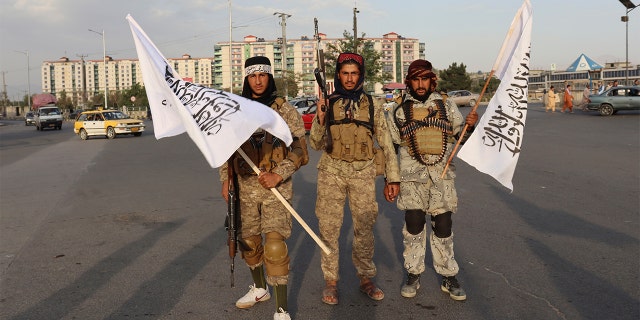A damning new United Nations Security Council report claims that terrorist group ISIS-K, the Afghan ISIS affiliate, is the most serious current terrorist threat operating in Afghanistan, with an estimated 4,000 to 6,000 fighters. Since the country fell, ISIS-K has benefited from increased operational capabilities and freedom of movement inside Afghanistan.
Most troubling for the United States and its allies is the report’s claim that the relationship between the Taliban and al Qaeda and other terrorist groups remains “strong and symbiotic.” Following the collapse of the U.S.-backed Ashraf Ghani government in August 2021, Taliban spokespersons made assurances that Afghanistan would not once again become a safe haven for terrorist groups, and they would not allow any terror group to stage an attack from Afghan territory.
The 2020 Doha Agreement, negotiated under former President Trump, laid the groundwork for the withdrawal of all U.S. forces in exchange for a pledge from the Taliban to prevent any terrorist organization from using Afghan soil to threaten or attack the United States or its allies.
The report states that not only is al Qaeda’s relationship with the Taliban strong, but al Qaeda protects senior Taliban officials and has attempted to infiltrate the ranks of the government. In at least two cases, two Taliban provisional governors are affiliated with al Qaeda and another Taliban associated with the group is the deputy director of the general directorate of intelligence. It’s also confirmed through Interlocutors that the Taliban provided al Qaeda with monthly “welfare payments,” with some of the money going to fighters in affiliated groups.
To many in the Afghan resistance, the report confirms what they’ve been fighting for since Afghanistan fell to the Taliban.
The Taliban-appointed foreign minister, Amir Khan Muttaqi, arrives in Islamabad, Pakistan, May 5, 2023. (Afghanistan Embassy in Pakistan via AP)
“This report serves as a validation of our claims regarding the Taliban’s apartheid and oppression. It confirms the alarming surge in drug production within the country as well. Furthermore, it highlights the growing presence, mobilization and threat posed by over 21 terrorist groups in Afghanistan, thereby endangering regional and international security,” Ali Maisam Nazary, head of foreign relations for the National Resistance Front (NRF), told Fox News Digital.
“The time has come for the international community to acknowledge the gravity of Afghanistan’s threats and its fragile state. It is crucial to abandon failed strategies that have failed to bring about any positive changes in the past two years or address the imminent dangers originating from Afghanistan,” Nazary said.
The U.N. report also highlights divisions within the Taliban. It notes that the group is battling internal divides between factions in Kandahar that are isolationist, religiously conservative, and unconcerned with international perception, and the power-center based in Kabul that tried to rebrand the Taliban as more pragmatic and open to engagement internationally.
The fragmentation focuses on the distribution of power among state and provincial officials, with conflict between acting Interior Minister Sirajuddin Haqqani and acting First Deputy Prime Minister Mullah Baradar.

Taliban fighters guard the site of an explosion in Kabul, Afghanistan, June 18, 2022. (AP Photo/Ebrahim Noroozi)
TALIBAN’S POWER CHALLENGED BY AFGHAN NATIONAL RESISTANCE FRONT, ISIS-K
The competition for power is so fierce that it represents a real threat to the stability of the Afghan state.
“Internal Taliban divisions could undermine the Taliban’s ability to guarantee security and counter Islamic State Khorasan Province (ISIS-K), however. Taliban internal divisions likely hinder their ability to have an effective security strategy which can address ISIS-K networks in northern and eastern Afghanistan,” Peter Mills, Afghanistan researcher at the Institute for the Study of War, told Fox News Digital.
The report also notes that al Qaeda uses Afghanistan as a logistical hub to recruit new fighters and is quietly rebuilding its external operations capabilities, in direct contradiction to the Taliban’s 2021 pledges to the international community.

Newly recruited personnel joining Taliban security forces demonstrate their skills during their graduation ceremony in Herat on Feb. 9, 2023. (Mohsen Karimi/AFP via Getty Images)
The Taliban rejected the reports findings and said the claims are untrue. “This report is not based on ground realities. There is no recruitment center or funding and training centers of al Qaeda in Afghanistan. This is just a claim and accusation,” a Taliban spokesperson told Fox News Digital.
The report notes that al Qaeda has become a more decentralized organization since being decimated after the U.S. invasion of Afghanistan in 2001 and direct links and contacts with regional branches are weaker, which suggests their ability to coordinate large-scale attacks across affiliates is low. In the long term, al Qaeda will be able to capitalize and strengthen on continued instability in Afghanistan, the report states.

Taliban fighters in Kabul, Afghanistan, Aug. 30, 2021. (AP Photo/Khwaja Tawfiq Sediqi)
CLICK HERE TO GET THE FOX NEWS APP
There are an estimated 400 al Qaeda fighters in Afghanistan, with about 2,000 including family members and supporters. The terrorist group currently has a presence in major hubs such as Kabul, Kandahar and Helmand and it is also establishing new training camps, according to the report.
The terror group’s relationship with the Taliban is long-standing, with personal bonds of marriage and a shared partnership in armed struggle cemented through second generation ties. Al Qaeda pledged fealty to Taliban leader Mullah Omar in the 1990s in exchange for a safe haven in Afghanistan and Mullah Omar refused to hand over Usama bin Laden to U.S. authorities after 9/11. Taliban leaders also consulted with al Qaeda leaders during the nearly two years of negotiations with the U.S. – and promised to honor the historical relationship between the Islamist militant groups.
The NRF, viewed as the most formidable Afghan resistance unit, has been asking for greater assistance and support in their efforts to take on the Taliban, but such pleas have so far fallen on deaf ears.